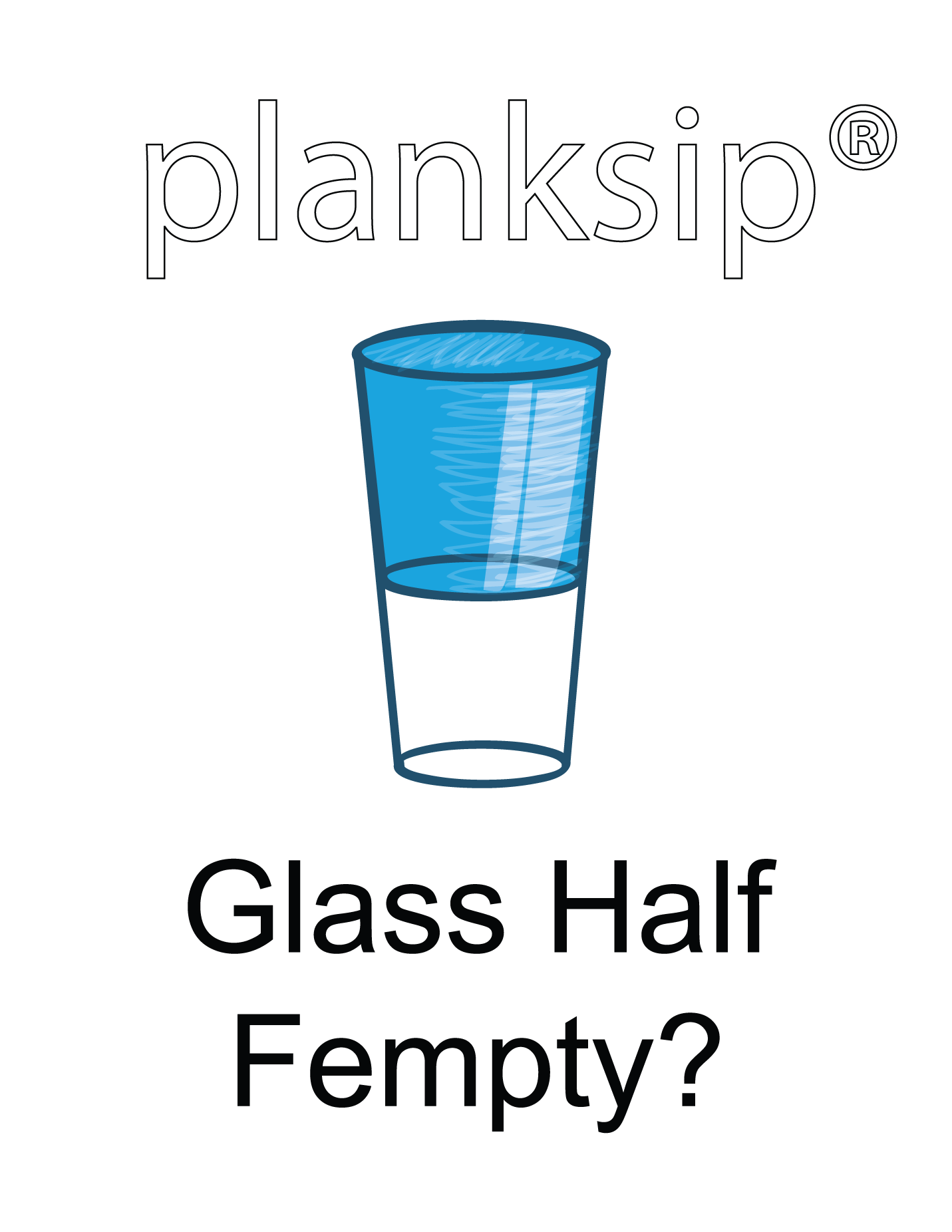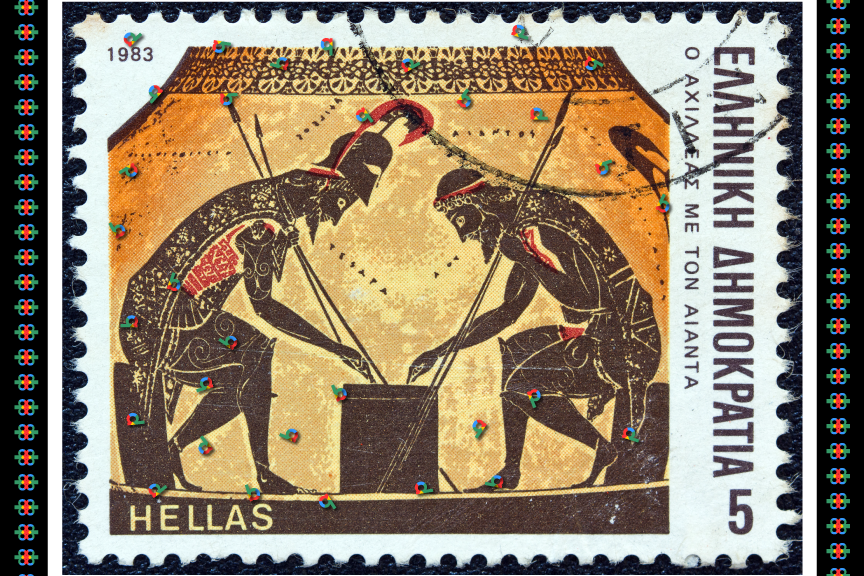Drip, drip, drip, drip...

Persistence Personified
What is harder than rock, or softer than water? Yet soft water hollows out hard rock. Persevere.
— Ovid (43 BC - 18 AD)
Religion is the idol of the mob; it adores everything it does not understand.
— Frederick the Great (1712-1786)
It is a far, far better thing that I do than I have ever done; it is a far, far better rest that I go to than I have ever known.
— Charles Darwin (1812-1870)
Education is not preparation for life; education is life itself.
— John Dewey (1859-1952)

Glass Half Fempty Art
In the canvas of the bustling city, amidst the cacophony of daily life, there stood a quaint gallery, "Glass Half Fempty Art." It was a haven for those who sought refuge from the relentless pace of the world, a place where art transcended the mere visual to become a dialogue with the soul. The curator, Eleanor, was a weaver of dreams, her canvases spoke not just in colors but in emotions, each piece a testament to her belief in the transformative power of art.
In a gentle way, you can shake the world.
— Mahatma Gandhi (1869-1948)
This quote was the invisible thread that bound her latest exhibition. Eleanor lived by these words, her art a gentle but powerful tremor that sought to shake the foundations of one's perception of the world. Her works were an amalgamation of soft pastels and striking contrasts, each brushstroke a whisper encouraging introspection and change.
In a corner of the gallery, beneath the soft luminescence of a skylight, stood a piece that captivated all who beheld it. It was a simple depiction of a tumultuous sea, the moon casting a silver path across the water. To the untrained eye, it was merely a seascape, but to those who looked closer, the message was clear. The moonlight did not shy away from the stormy waters; it embraced them, turning turmoil into beauty. Eleanor's art whispered of resilience, of finding peace and beauty in the chaos of existence.
Visitors to the gallery often found themselves lost in thought before her paintings, drawn into a silent conversation with the artist and, more importantly, with themselves. Among them was James, a young man burdened by the weight of expectation and the fear of an uncertain future. Eleanor's art spoke to him, its message clear: change begins with a whisper, a gentle nudge towards the extraordinary.
James found himself returning to the gallery, drawn by the serenity it offered and the lessons it imparted. He began to see his own world in a new light, recognizing that each day was a canvas awaiting his brush. The challenges he faced were not insurmountable obstacles but opportunities for growth, each difficulty a chance to create something beautiful from the tumult of life.
Inspired by Eleanor's art, James embarked on a journey of transformation. He approached his fears not with trepidation but with curiosity, embracing the unknown with the understanding that it held the key to his evolution. The city around him remained the same, its pace as relentless as ever, but James moved through it differently. He had learned the art of gentle change, of shaking the world not with loud proclamations but with quiet actions and a hopeful heart.
Eleanor's gallery continued to be a beacon for those seeking understanding and inspiration. "Glass Half Fempty Art" was more than a collection of paintings; it was a movement, a philosophy that championed the power of gentleness in a world that often valued strength above all. Through her art, Eleanor shook the world, one gentle stroke at a time, teaching others that true change starts within, in the quiet depths of the soul.
Thomas had lived his life in the shadows of pessimism, each day a mirror reflecting back his fears and doubts. The city, with its towering skyscrapers and endless hustle, seemed to him a labyrinth of missed opportunities and closed doors. That was until he stumbled upon "Glass Half Fempty Art," a gallery that seemed out of place in the grey monotony of his world. Here, he was introduced to the works of Eleanor, an artist whose paintings whispered of hope and possibility in every brushstroke.
A pessimist sees the difficulty in every opportunity; an optimist sees the opportunity in every difficulty.
— Winston Churchill (1874-1965)
Eleanor's gallery was a sanctuary where the philosophies of optimism were not just spoken but vividly illustrated on canvas. Her exhibition, a symphony of colors and emotions, spoke directly to Thomas. It was as if each piece had been crafted with him in mind, challenging his ingrained cynicism, urging him to see the world through a different lens.
Among the myriad of paintings, one in particular captured Thomas's attention. It depicted a barren desert with a single, vibrant flower blooming defiantly in the center. This flower, surrounded by adversity, stood tall and unyielded, a vivid splash of color against the monotony of its environment. It was a visual metaphor that resonated deeply with Thomas, embodying the essence of Churchill's words. Here was difficulty, yet within it lay a profound opportunity for beauty and growth.
Eleanor's art began to chip away at the walls Thomas had built around himself. He saw in her paintings a world where challenges were not endpoints but beginnings, stepping stones on the path to self-discovery and fulfillment. The gallery became a place of pilgrimage for him, each visit peeling away layers of his pessimism, revealing the optimist that lay beneath.
Inspired by what he had seen and felt, Thomas began to approach his own life with a newfound optimism. The difficulties he faced were no longer insurmountable obstacles but opportunities to learn, to grow, to become a version of himself he had never thought possible. The city around him transformed, no longer a labyrinth of despair but a landscape brimming with potential.
Through Eleanor's art, Thomas learned that the perspective with which one views the world can change everything. The desert of his life, once barren and devoid of hope, now teemed with vibrant flowers of possibility. Each day brought with it the promise of growth, of beauty found not in spite of difficulty but because of it.
"Glass Half Fempty Art" had become more than just a gallery to Thomas; it was a beacon of optimism in a world that often seemed cloaked in shadows. Eleanor's work, a testament to the power of perspective, had shown him that within every challenge lies the seed of opportunity, waiting only for the optimist's touch to bloom.
In the weeks following his discovery of "Glass Half Fempty Art," Thomas found himself in a state of transformation. The gallery had become a second home, a place where he could immerse himself in the beauty of Eleanor's art and, in doing so, rediscover the beauty within himself. It was during one of these reflective visits that he encountered a new exhibition, one that seemed to diverge from Eleanor's usual themes of optimism and perspective.
The art of storytelling is reaching its end because the epic side of truth, wisdom, is dying out.
— Walter Benjamin (1892-1940)
This collection was a somber reflection on the state of storytelling in the modern world. Each piece, while stunning, carried a weight of melancholy, a longing for the lost art of weaving tales that spoke to the soul. It was a departure from the hopeful messages that had so deeply touched Thomas, yet it captivated him all the same.
The centerpiece of the exhibition was a painting that depicted an ancient library, its shelves teeming with books, dust motes dancing in beams of light that pierced through windows lost to time. The scene was one of haunting beauty, a sanctuary of wisdom abandoned, its stories untold and forgotten. This painting, more than any other, struck a chord with Thomas. It spoke of a world where the epic narratives of truth and wisdom were being overshadowed by the transient, the ephemeral.
Eleanor, noticing Thomas's fixation, approached him. They spoke at length about the painting and the quote by Walter Benjamin that had inspired it. Eleanor shared her fears that in a world dominated by snippets of information, the depth and complexity of true storytelling were being lost. This exhibition was her lament but also her defiance, a call to remember and revive the epic side of truth.
Thomas left the gallery that day with a heavy heart but also a spark of inspiration. He realized that storytelling, in its most profound form, was not limited to the written word or the painted canvas. It was around them, in every moment, every interaction, every quiet act of kindness. He began to see his own life as a narrative in the making, one where he could be both the author and the protagonist.
Inspired by Eleanor's exhibition, Thomas embarked on a journey to rediscover the stories that shaped him. He revisited old memories, rekindled relationships, and sought out new experiences, each one a thread in the tapestry of his life. He started to share these stories with others, not just as anecdotes but as narratives imbued with truth and wisdom.
As months passed, Thomas's life became richer, fuller. He found joy in the act of storytelling, not just as a listener but as a participant. Through his efforts, he rekindled an appreciation for the epic side of truth among his circle of friends and family, creating a ripple effect that spread far beyond.
Eleanor's gallery, and particularly this somber yet profound exhibition, had once again served as a catalyst for change. "Glass Half Fempty Art" was not just a space for viewing art; it was a space for reflection, for dialogue, for the sharing of stories that resonated with the epic truth Walter Benjamin feared was being lost.
As Thomas's understanding and appreciation of storytelling deepened, he found himself drawn back to "Glass Half Fempty Art" with a new perspective. Each visit unveiled layers of meaning he had previously overlooked, not just in Eleanor's art but in the world around him. It was during one such visit, amid the quiet hum of contemplation that filled the gallery, that he discovered Eleanor's latest work, a series that seemed to encapsulate the essence of creation itself.
Ultimately, literature is nothing but carpentry. With both you are working with reality, a material just as hard as wood.
— Gabriel García Márquez (1927-2014)
This quote adorned the wall at the entrance of the new exhibition, serving as a preamble to the collection that lay beyond. Eleanor had ventured into the realm of the tangible, her artworks embodying the fusion of literature and carpentry, each piece a testament to the craftsmanship of storytelling.
The exhibition was a marvel of imagination, where sculptures made from pages of books took on forms that told stories beyond words. One piece, in particular, captivated Thomas—a life-sized figure of a man, pieced together from the spines and pages of countless novels. The figure was bent over a workbench, tools in hand, as if caught in the act of creating itself. It was a powerful visual metaphor for the process of storytelling, the shaping of narratives from the raw material of reality.
Eleanor's work spoke to Thomas on a profound level. He saw in it the reflection of his own journey, the transformation of his life through the stories he had embraced and shared. The notion that literature and carpentry shared a common essence, that both were acts of creation, resonated with him. He understood now that every choice he made, every word he spoke, was a stroke of the chisel, shaping the narrative of his existence.
Inspired by this revelation, Thomas began to approach his life with the deliberate intent of a craftsman. He sought to imbue his actions with meaning, to construct his days with the same care and attention to detail that a carpenter would give to their creations. He realized that reality, much like wood, could be stubborn and resistant, but with patience and skill, it could be molded into something beautiful.
Thomas's transformation was not lost on those around him. Friends and family noticed the change, the way he seemed to weave his experiences into a larger narrative, one that inspired and uplifted. His life became a living artwork, a story that continued to unfold with each passing day.
Eleanor's exhibition had once again served as a catalyst for change, not just for Thomas but for all who experienced it. "Glass Half Fempty Art" had become more than a gallery; it was a place where art and life converged, where the act of creation was celebrated in all its forms. Through her work, Eleanor had shown that the essence of storytelling lay not in the medium but in the intention, the careful crafting of reality into something that transcended the ordinary.
Thomas, once a visitor seeking solace in the gallery's quiet beauty, had become a part of its legacy, a living testament to the power of art to transform and to heal. "Glass Half Fempty Art" had become a beacon of hope, a reminder that within each of us lies the potential to shape our reality, to craft our own epic narrative from the material of our lives.
In the months following the carpentry and literature exhibition, Thomas found himself at a crossroads. The journey he had embarked upon, inspired by Eleanor's "Glass Half Fempty Art," had led him to a deeper understanding of himself and his place in the world. Yet, as is often the case with journeys of self-discovery, new challenges arose, testing his resolve and the lessons he had learned. It was during this period of uncertainty that Eleanor unveiled her latest exhibition, one that seemed tailor-made for the moment Thomas found himself in.
I don't believe in pessimism. If something doesn't come up the way you want, forge ahead. If you think it's going to rain, it will.
— Clint Eastwood
This quote, emblazoned at the entrance of the gallery, greeted Thomas as he stepped into a space transformed yet again by Eleanor's visionary art. This new collection was a vibrant testament to resilience and the power of a positive mindset. Each piece, whether through the medium of paint, sculpture, or installation, spoke of the capacity to forge ahead in the face of adversity, to shape one's own destiny with determination and hope.
The centerpiece of the exhibition was a dynamic sculpture that captured the essence of Eastwood's words. It depicted a figure striding forward, its form partially composed of transparent materials that seemed to shimmer with an inner light. The figure was stepping out of a dark cloud, moving toward a bright horizon painted on the wall behind it. This visual metaphor struck a chord with Thomas, encapsulating the journey he had been on since his first encounter with Eleanor's gallery.
The exhibition became a turning point for Thomas. It reminded him that his perspective was a powerful tool in navigating life's challenges. The pessimism that once clouded his vision had been replaced by a hopeful optimism, not naïve but grounded in the belief that he had the power to influence the outcome of his journey.
Inspired by the art and the quote from Clint Eastwood, Thomas began to approach his challenges with a renewed vigor. When faced with setbacks, he no longer saw them as insurmountable obstacles but as opportunities to learn and grow. He understood that his reaction to these challenges could either invite pessimism and defeat or foster resilience and progress.
This shift in perspective did not go unnoticed. Thomas's friends and family saw a remarkable change in him, a newfound brightness that seemed to light up the spaces he occupied. He became a source of inspiration to those around him, sharing the lessons he had learned about the power of optimism and the importance of forging ahead, regardless of the circumstances.
Eleanor's gallery, through its ever-evolving exhibitions, had become more than just a place of art; it was a catalyst for change, a source of inspiration and insight for all who entered its doors. "Glass Half Fempty Art" had not only transformed Thomas's life but had also become a beacon of hope and resilience in the community.
As Thomas continued on his path, he carried with him the lessons learned from Eleanor's art. He understood that life, much like the exhibitions at "Glass Half Fempty Art," was an ever-changing landscape, filled with challenges and opportunities alike. It was not the circumstances he faced that defined his journey, but his response to them. With optimism as his compass, Thomas forged ahead, embracing the rain and the sunshine alike, knowing that both were essential to the growth and beauty of his life's narrative.
Figures of Speech Collection Personified
Our editorial instructions for your contest submission are simple: incorporate the quotes and imagery from the above article into your submission.
What emerges is entirely up to you!
Winners receive $500 per winning entry multiplied by the article's featured quotes. Our largest prize is $8,000 for rewriting the following article;

At planksip, we believe in changing the way people engage; at least, that's the Idea (ἰδέα). By becoming a member of our thought-provoking community, you'll have the chance to win incredible prizes and access our extensive network of media outlets that will amplify your voice as a thought leader. Your membership truly matters!


